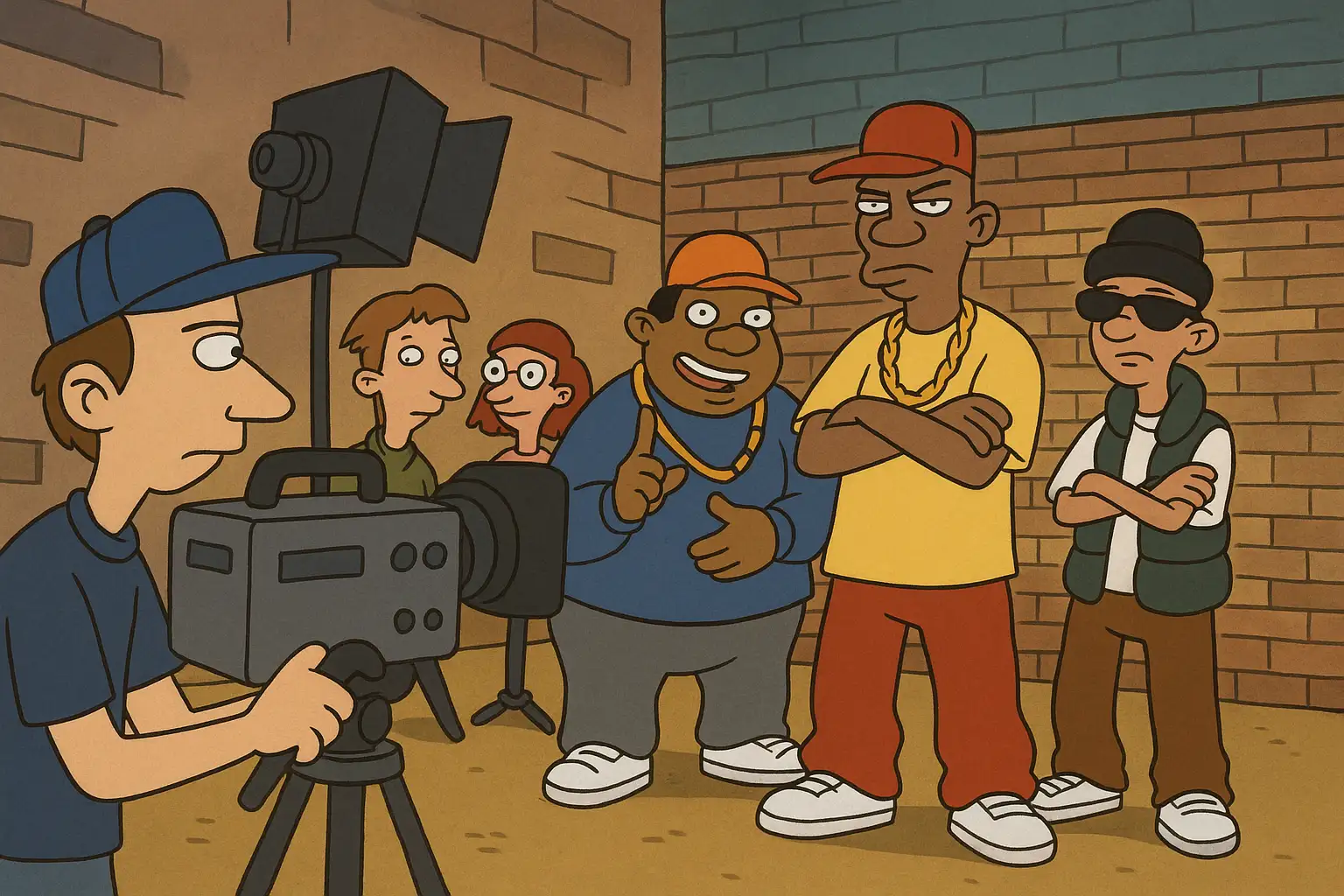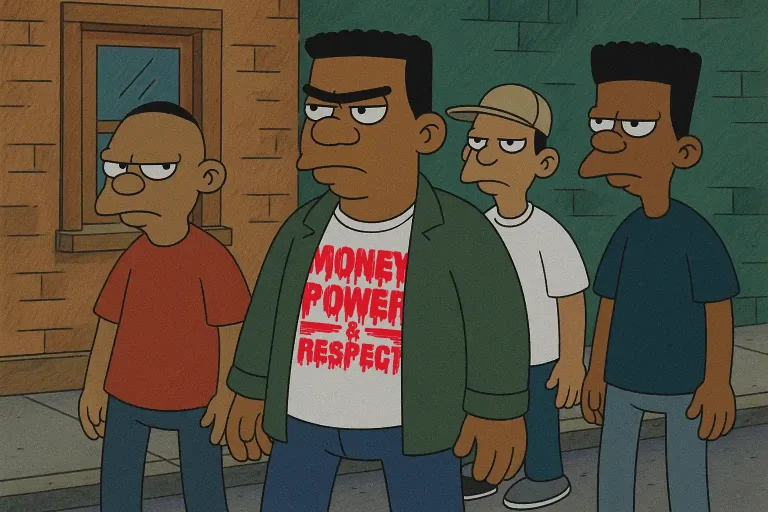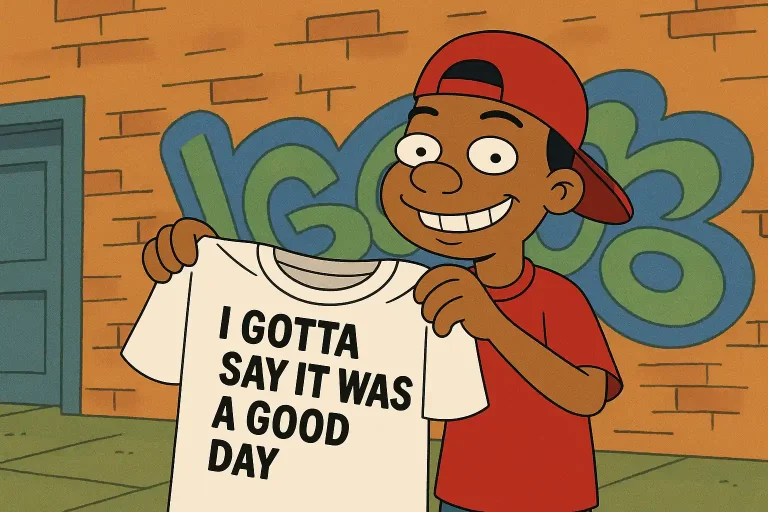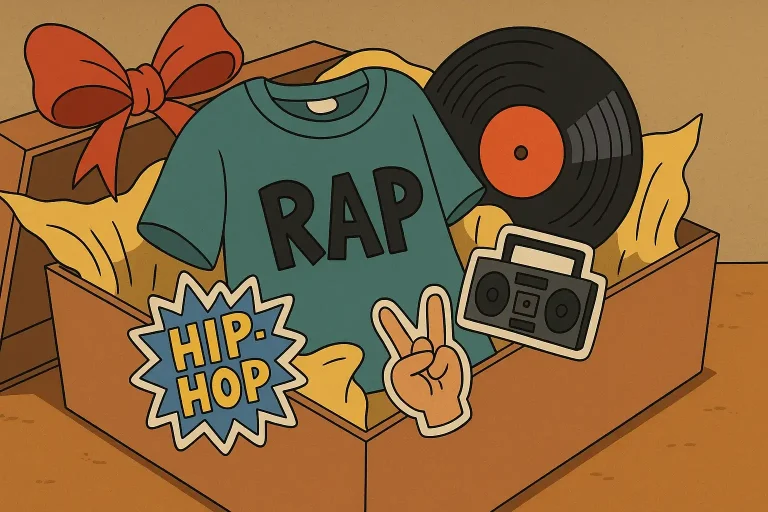Shop without borders - we offer worldwide shipping!
The 1990s was a monumental decade for music, fashion, and culture, with 90s rap at its core. Iconic music videos from this era redefined visual storytelling, becoming cinematic statements, cultural manifestos, and fashion runways. This article explores how these classic 90s hip-hop visuals shaped the genre, solidified its mainstream dominance, and left an indelible mark on popular culture through innovative techniques and compelling narratives.
The 90s witnessed rap’s transformation from a marginalized genre into one of the most popular and lucrative in the world. This transformative era marked hip-hop’s first complete decade of consistently delivering classics, evolving from an underground movement into a cultural phenomenon. Music videos were central to this ascent, allowing artists to cultivate a superstar presence and personality that transcended audio alone. Increased investment and sophistication in 90s rap videos served as a strategic vehicle for mainstream penetration, making hip-hop accessible and appealing to a broader audience. This visual revolution democratized access to hip-hop culture, accelerating its commercial success and cultural integration, and transforming artists into revered figures.
The Visual Revolution: Setting the Scene for Hip-Hop’s Ascent
MTV’s 1981 launch revolutionized music, establishing the 80s and early 90s as the golden age of music videos. For hip-hop, MTV and BET provided vital platforms, boosting audience reach, production values, and creative experimentation. This visual emphasis fundamentally transformed music consumption.
The early 90s marked a transition from old-school hip-hop to a new wave, characterized by raw, gritty urban portrayals reflecting the genre’s authentic roots. As hip-hop’s cultural reach expanded, music videos became instrumental in its crossover, shaping rap’s aesthetics—from fashion and style to sound—and establishing artists as influential cultural figures.
90s music videos actively shaped hip-hop’s evolution, visually indicating its growth and diversification into subgenres like gangsta, conscious, and alternative rap. The visual medium powerfully communicated “real-life narratives and street tales,” serving as cultural education, social commentary, and an unfiltered news outlet for overlooked communities. This era solidified rap as a significant, respected genre, producing enduring classics. To learn more about the broader impact of music videos, you can explore this article on the evolution of music video production.
West Coast Cool: Sun-Drenched Storytelling and G-Funk Glamour
G-Funk, with its funky basslines and melodic synthesizers, defined the early 90s West Coast sound. Videos featured a laid-back, sun-soaked aesthetic, showcasing classic cars, palm trees, and vibrant party scenes, reflecting the region’s unique culture.
Snoop Dogg’s “Gin & Juice” is the quintessential party anthem, its iconic video playfully parodying “Home Alone” with Snoop hosting an epic house party. This visual cemented the song’s status as the ultimate party blueprint and a staple of the laid-back G-Funk lifestyle.
2Pac’s “California Love,” directed by Hype Williams, is another defining visual. Its Mad Max-inspired video, with futuristic desert scenes and elaborate production, propelled the song’s cultural impact. This cinematic visual, complementing 2Pac’s delivery and Dr. Dre’s beats, exemplified 90s rap videos’ Hollywood-rivaling scale and West Coast opulence.
These visuals promoted an aspirational West Coast hip-hop lifestyle. Vibrant parties, luxurious cars, and sun-drenched settings were integral to artists’ brand images, selling a dream of success and freedom. This visual branding significantly expanded G-Funk and West Coast rap’s appeal, transforming it into an emulated lifestyle and effectively broadening hip-hop’s commercial reach by influencing fashion and consumer habits. To truly embody the West Coast vibe, consider exploring our collection of hip-hop inspired clothing, perfect for expressing your appreciation for the culture.
East Coast Grit: Urban Realism and Lyrical Narratives
East Coast videos, contrasting West Coast glamour, featured darker, grittier urban realism, mirroring the boom-bap sound’s hard-hitting drums and sample-based production. This style, rooted in jazz and soul samples, created powerful, punchy beats.
The Notorious B.I.G.’s “Juicy,” directed by Sean Combs, is an iconic video chronicling Biggie’s “rags-to-riches” journey. It vividly depicts his impoverished childhood, drug dealing, and eventual rise, glorifying newfound wealth with lavish parties. The video effectively conveyed his aspirational narrative, defining East Coast luxury and his stardom.
Wu-Tang Clan’s “C.R.E.A.M.” (1993) showcases early 90s New York urban fashion like puffer jackets and Timberland boots. While depicting members gaining wealth, the video critiques money as another form of imprisonment. Its somber, gritty feel conveys the “isolated, trapped feeling of growing up Black in the United States,” resonating with authenticity and highlighting economic struggles and the complex relationship between money, racism, and incarceration.
Nas’s “N.Y. State of Mind” and Mobb Deep’s “Shook Ones Pt. II” exemplify the raw East Coast aesthetic. While “N.Y. State of Mind” embodies New York’s gritty reality, “Shook Ones, Part II,” shot entirely in Queensbridge, offers a “grimey edge and authentic feel,” showing Prodigy and Havoc rapping in the housing projects and a car, underscoring street credibility and realism.
Unlike West Coast glamour, East Coast videos prioritized raw authenticity and urban realism, offering unfiltered glimpses into marginalized neighborhoods. Showcasing genuine environments and fashion, these videos reinforced artists’ credibility and hip-hop’s role as a voice for the streets, highlighting social issues. This authenticity fostered deep audience connection and significantly influenced fashion, making durable clothing like Carhartt and Timberland boots iconic. For a truly authentic East Coast look, explore our collection of hip-hop t-shirts, featuring designs that capture the essence of this era.
Beyond the Mainstream: Alternative and Conscious Visuals
The 90s saw a surge of creativity in rap, birthing conscious and alternative subgenres. Conscious rap tackled social issues like racial inequality and police violence, serving as activism. Alternative rap pushed boundaries with introspective themes and diverse musical influences, leading to unique visual approaches.
A Tribe Called Quest, a guiding light for alternative rap, showcased their laid-back, jazz-rap aesthetic in videos like “Can I Kick It?”, featuring playful interaction with a giant “it” prop and a “flying record player.” Their classic posse cut “Scenario” used an “interactive desktop” visual and featured cameos, highlighting an experimental, collaborative style, and marking a breakout moment for Busta Rhymes.
Public Enemy’s “Fight the Power,” directed by Spike Lee and theme for Do The Right Thing, is a powerful political statement. The video blends protest imagery, like a “Young People’s March to End Racial Violence,” with iconography of Malcolm X and the Public Enemy logo. This visual narrative educates on Black history and challenges racial politics, showcasing the group’s militant aesthetic through deliberate camera angles and visible production elements for a raw, documentary feel, reinforced by signs honoring Black American icons.
90s rap visuals were diverse, serving as platforms for artistic and social experimentation beyond commercial appeal. Artists pushed thematic and stylistic boundaries, with conscious rap addressing systemic issues and alternative rap offering playful, intellectual approaches, proving the genre’s versatility. This entertainment-activism dual function, amplified visually, made complex messages impactful, expanding hip-hop’s credibility, attracting diverse audiences, and solidifying its role as a cultural force for social change, paving the way for future artists’ creative freedom.
Key Iconic 90s Rap Videos: A Visual Breakdown
| Music Video | Artist(s) | Director(s) | Key Visual Elements | Cultural Impact |
| Gin & Juice | Snoop Dogg | Dr. Dre | House party parody, laid-back West Coast vibe, G-Funk lifestyle | Ultimate party blueprint, cemented Snoop’s persona, G-Funk visual staple |
| California Love | 2Pac ft. Dr. Dre | Hype Williams | Mad Max-inspired futuristic desert, cinematic scale, high production value | Elevated song’s cultural impact, defined West Coast opulence |
| Juicy | The Notorious B.I.G. | Sean Combs | Rags-to-riches narrative, lavish lifestyle, urban settings, aspiration | Defined East Coast luxury, aspirational imagery, Biggie’s rise |
| C.R.E.A.M. | Wu-Tang Clan | Brett Ratner | Gritty urban realism, New York street fashion (puffer jackets, Timbs), wealth vs. struggle | Authentic portrayal of street life, iconic fashion, social commentary |
| Can I Kick It? | A Tribe Called Quest | Jim Swaffield | Playful interaction with “it” prop, laid-back, jazz-rap aesthetic, intellectual cool | Defined alternative hip-hop visuals, showcased group’s unique style |
| Fight the Power | Public Enemy | Spike Lee | Protest march, powerful political iconography (Malcolm X, PE logo), militant aesthetic | Incited revolution, educated on Black history/rights, powerful social statement |
| The Rain (Supa Dupa Fly) | Missy Elliott | Hype Williams | Surreal, avant-garde, “Michelin Man” suit, cutting-edge CGI, innovative choreography | Pushed visual boundaries, solidified Missy as pioneer, influenced future video production |
The Visionaries Behind the Lens: Influential Directors
In the 90s, music video directors became profoundly influential, elevating the genre’s visual style. Their creative contributions were as crucial as the artists’ music in shaping the era.
Hype Williams was arguably the most influential 90s hip-hop director, known for his instantly recognizable, distinct style. His signature fisheye lenses, vibrant colors, and innovative camera angles perfectly suited the era’s extravagant hip-hop. His work on videos like Busta Rhymes’ “Gimme Some More” and Missy Elliott’s “The Rain” introduced a surreal, influential visual style. Williams also directed 2Pac’s “California Love” and the “hood classic” film Belly. For more on his impact, check out this article on Hype Williams’ influence.
Spike Jonze, an iconic director who transitioned to filmmaking, started as a skate/BMX photographer. His unique, whimsical, and experimental approach was evident in videos for Beastie Boys (“Sabotage,” “Sure Shot”) and The Pharcyde (“Drop”). His early 90s work featured “whimsical grit” and “energetic cross-cutting,” and he co-directed Sonic Youth’s “100%,” applying his skate footage expertise.
Other influential directors included Michel Gondry, Dave Meyers, Spike Lee, and Jim Swaffield. These visionaries transformed music videos into a legitimate art form in hip-hop, shaping its visual language and pushing creative boundaries. This led to increased production values and sophisticated storytelling, solidifying hip-hop’s cultural dominance.
Embed from Getty ImagesFashion as Visual Storytelling: Defining a Decade’s Style
90s music videos were hip-hop’s ultimate fashion runway, popularizing trends and influencing global fans. Artists prominently showcased unique styles, setting trends that resonated across cultures. The rise of music videos in the 80s and 90s was crucial, with artists like Run-D.M.C., LL Cool J, Tupac, and Biggie influencing fashion.
The decade’s style featured baggy clothing, oversized T-shirts, and hoodies, conveying comfort and rebellion, popularized by artists like Snoop Dogg and Wu-Tang Clan. Tracksuits, sportswear, caps, hats, and bandanas were ubiquitous. Gold chains and oversized jewelry became undeniable status symbols, reflecting a “ghetto fabulous flair” in the late 90s.
Specific brands became synonymous with hip-hop. Adidas and Nike, with iconic tracksuits and Superstars, integrated deeply. Artists fused high-end fashion with streetwear, incorporating luxury brands like Versace (Notorious B.I.G.) and Tommy Hilfiger (Grand Puba). Durable workwear like Carhartt and Timberland boots became staples (Mobb Deep, Wu-Tang Clan). Sports jerseys, Starter jackets, classic white tees, and MC Hammer’s harem pants also gained popularity.
In 90s rap videos, fashion was powerful non-verbal communication, expressing identity, street culture, regional affiliations, and rebellion. It conveyed aspiration, with luxury brands symbolizing success. This transformed music videos into potent marketing tools for fashion brands, fostering a symbiotic relationship and democratizing fashion by bringing street styles mainstream. To channel the iconic oversized look, consider our range of hip-hop hoodies, designed for comfort and style.
Technological Leaps: CGI, Digital Effects, and Creative Innovation
The 90s advanced music video production with higher technology and production values. Digital editing and improved special effects enabled more polished, visually complex videos, blending traditional and digital techniques to push creative boundaries.
The decade saw innovative visual effects, with artists and directors incorporating CGI to create fantastical realms, blurring reality and imagination through seamless integration of real-life footage and computer-generated imagery.
Influential examples included Michael Jackson’s “Black or White” (morphing) and Jamiroquai’s “Virtual Insanity” (CGI). Missy Elliott pioneered hip-hop visual innovation with “cutting-edge CGI and choreography” in videos like “Work It” and “The Rain” (featuring the “Michelin Man suit”). Hype Williams, her collaborator, brought avant-garde techniques like fisheye distortion to rap. Digital editing software further empowered directors, fostering experimentation and complexity as futurism permeated hip-hop visuals.
90s technological advancements fundamentally catalyzed hip-hop music video artistry. Digital tools and CGI enabled artists and directors to realize ambitious, imaginative visual concepts, making narratives more complex, surreal, and impactful. This fueled creative innovation, transforming 90s rap videos into “visually stunning and immersive experiences,” pushing hip-hop’s visual identity beyond realism into fantasy, broadening its appeal, setting new industry standards, and laying groundwork for today’s stylized, effects-driven videos.
The Enduring Legacy: 90s Rap Videos Today
The 90s were pivotal, laying groundwork for modern rap. Its legacy profoundly resonates today, influencing contemporary artists like Kendrick Lamar, J. Cole, and Drake, who cite 90s rappers as key influences.
The lasting influence of 90s rap visuals is undeniable. 90s rappers defined rap’s aesthetics—fashion, style, sound—and established artists as influential cultural icons. Their pioneering visual styles and narratives continue to inspire modern music videos, often with surreal visuals. The 90s scene also globalized the genre, showcasing its universal appeal as artists worldwide adopted its breakthroughs.
90s rap fashion—baggy clothing, sneakers, baseball caps—still significantly influences today’s culture. Its evolution from bold silhouettes to high-end collaborations highlights music and fashion’s deep intertwining. 90s hip-hop fashion was a cultural movement reflecting urban social issues and identities, leaving a lasting mainstream impact. For a deeper dive into this influence, read about how hip-hop fashion influenced the 1990s.
Conclusion: The Unforgettable Visual Soundtrack of a Generation
The 1990s were truly the golden age for rap music videos. From the sun-drenched parties of the West Coast to the gritty realities of East Coast streets, and the boundary-pushing experimentation of alternative hip-hop, these visuals did more than just accompany songs. They told compelling stories, set enduring fashion trends, challenged societal norms, and firmly established hip-hop as a global cultural phenomenon.
Visionary directors like Hype Williams and Spike Jonze, alongside the artists themselves, meticulously crafted iconic 90s rap music videos that remain essential viewing. These visuals continue to showcase the profound power of visual storytelling and the enduring influence of classic 90s hip-hop visuals. So, next time you queue up a 90s rap anthem, do not just listen—watch. Immerse yourself in the vibrant, authentic, and groundbreaking world of iconic 90s rap videos, and rediscover the unforgettable visual soundtrack of a generation.
FAQ
90s hip-hop music videos were influential because they transformed from mere promotional tools into cinematic art forms, offering compelling visual narratives, setting fashion trends, and serving as a crucial platform for artists to cultivate superstar personas. They also provided an unfiltered look into urban realities and social issues, making hip-hop accessible to a wider audience and accelerating its mainstream success.
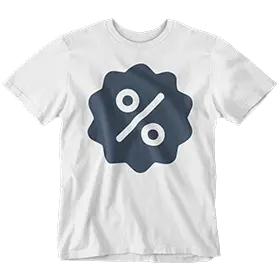
Get Exclusive Deals and Updates!
TTFVK8EW


